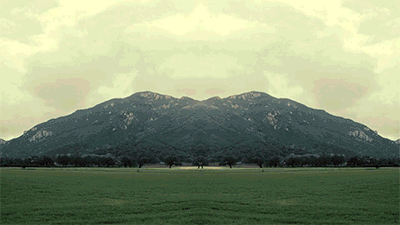“The still image will continue to lose its importance. Everything that can be animated will be animated—not always to the advantage of the quality of the project.”
— STEFAN SAGMEISTER
Quipped almost a decade ago by the Austrian prodigy, the truth is a lot of things that couldn’t move now can, for better or for worse. So, if everything is dancing now, what’s the best way to get off the wall without wasting your wallet?
Perhaps you should first approach the subject by understanding why things are moving this way. Just answer another question: ‘Why do people dance?” Science purports the trajectory of all sentient creations is toward synchronous movement – we’re wired to dance because we’re wired to duplicate. Within that synchronicity is really a yearning to be like what we see – in a word: FOMO. This Fondness Of Moving Objects is us wanting what we see to match what we want to be.
But to bring it back down, the issue is that everybody is playing the game, and they’re either spending a Trumpload of cash, or their output is hopelessly banal. Or both. The natural answer, therefore, is inventing cost effective methods to develop sequences and stories that scale and replicate in harmony.
SCALABLE IDEAS
Jamie xx’s recent duo of solo albums (We’re New Here and In Colour) are excellent examples of this method.
One thing’s for sure, the stronger the conceptual tone of a brand, the easier it is to convert its miniature echoes into meaningful motion. Honestly, Jamie xx is a rare phenomenon in all of branding – not just the music sector – in that his parent brand ‘The xx’ had already established a commanding visual identity in their X (an impressive feat, considering the proliferating contusion of those things in the first half of the 2010s). So, to break off the lower left leg and apply it to, well, everything, gives some pretty established borders in which to color.
If you deconstruct ‘Running’ you’ll find it a gateway drug from the solid X to the quartered X brand, as well as Jamie’s signature lease on chromatics (which he really milked when he released In Colour), particularly around 2:49. ‘Running’ is deceivingly complex, in that it’s really just repetitive symmetry … with calculated distribution *also known as design!*.
Leading up to his 2015 release, a front back of ‘Sleep Sound’ and ‘Girl’ do a brilliant job of surpassing the stale blank cover artwork (with abrasive letterbox sideburns) we all grew accustomed to for non music video music … videos … on YouTube. The first and last frame is indeed the cover artwork, but it’s the performance in between that keeps you both listening and looking. Girl has a few bells and whistles, but Sleep Sound is just a solitary rotation. Same goes for All Under One Roof Raving; they’re really just simple animations, stretched to 6 or so minutes. It’s solid thinking on the front end, then much less intensive animations on the back end. And we’re okay with that, because it’s no longer a stiff square, and it’s frankly the perfect kinetic interpretation of his mark.
REMARKABLE TOOLS
But what if your needs don’t necessitate slow, stretched, drawn out tweens of abstract graphics? What if you want to corral an adaptable idea, whether slow or fast, with live action? Well, a surfacing approach is investing in a remarkable tool, and then applying it in such a way that its capabilities (somewhat silently) are the real feature.
For instance: super high FPS Phantom Flex cameras. At $140K, they’re insane to buy but practical to rent for a day, and quite worth it, if you’ve spoken into existence an appropriate idea. There are obviously spectacular usages of it; for instance, Guillaume Panariello’s 5 second music video or anything by the Slow Mo Guys. But with a little thinking, one could come up with some tamer usages that would command attention without assailing the budget.

There’s also drone footage. Buy or rent one for a few days for less than $250 and shoot your next album teaser (Trip Lee’s ‘Rise’) or music video (Lecrae’s ‘Nuthin’)
It’s up to you to decide how many remarkable tools there are. What about a wide angle lensed GoPro? You can send basketball memorabilia into space or just enjoy the other types of hoops. (Yes, I’m talking the physical physics of the Dallas Cowboy Cheerleaders.)
FORMATS

Why not just reimagine the whole format altogether? You don’t have to shoot 360º; you can just be like this guy — embrace the found media of an Instagram square. Or, to think differently, what if you double up what you take away? Danny Yount’s SEMI-PERMANENT 2013 Titles, Daihei Shibata’s Shinakensen Experiments, and Imaginary Forces’ Bosch Titles all employ the kaleidoscopic motion tiling effect to perfection.
There are also still life objects with limited moving parts. You don’t have to get cheesy or kitschy. Bishop’s Wild Horses (and River, nonetheless) are actually frontal shots of reeling cassette tapes. (One would hope her vision team planned out all her hits as if they were on an actual tape, but, alas, it’s just the same shot with different type, rather than a little more reel undone per release.)
SLOW IT DOWN
Sure, it’s moving, but it doesn’t have to always be zippy. Sometimes slow grace reaches considerably further. Many successful ideas presented here actually found their core essence in slow motion. Spend the time up front to carve a potent concept that can replicate itself in multiple ways, and your dollar won’t just dazzle, it’ll keep dancing.



